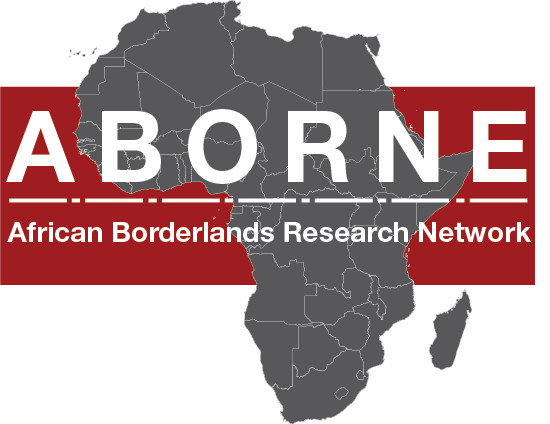Mombasa, Kenya’s second city, is dying. The process is gaining pace, deliberate, and wrapped up in lofty rhetoric about its bright future. Under tropical palms, crime and unemployment in the port town are rising, businesses are fleeing, and public services in everything from waste collection to road repairs are running out of money.
At the heart of the problem is the city’s increasing exposure to the nation’s capital. Nairobi acts like a kind of gravity well – four million people, sprawled across seven hundred square kilometres, absorbing jobs, labour, and wealth from Kenya’s smaller urban centres. For years, Mombasa has just about managed to stay outside of its event horizon. But devolution, electoral politics, personal grudges, and big infrastructure have put the coastal hub on a collision course with the capital, and thrown its people into a confrontation they are unlikely to win.
As integration into the East African community has deepened and billions of dollars have been pumped into transport infrastructure, space in Kenya has been profoundly altered.
As integration into the East African community has deepened and billions of dollars have been pumped into transport infrastructure, space in Kenya has been profoundly altered. Behind the jargon of the ‘spatial turn’, the main point is that our maps are misleading. Softening borders, uneven state capacity, and new transport infrastructure all result in a complicated, unstable social landscape. Across Kenya, one-stop border posts and single window customs systems have helped provide unprecedented access to markets in Uganda, Rwanda, DR.Congo and South Sudan. Nairobi and Mombasa may still be 480 kilometres apart, but the Standard Gauge Railway and new freight policies have forced them together in ways they have not previously experienced.
Inevitably, where new sectors of the economy are developed, others are torn down to make way. What’s striking about the Mombasa-Nairobi case is how unevenly the benefits are being felt, and how little contingency planning seems to have gone on at the coast. Other than a slight uptick in domestic tourism to hotels in Mombasa, the city is under enormous economic strain, while most of the profits go to the capital.
So far Mombasa’s biggest victims have been its bus companies, trucking firms, and storage yards. New laws require forty per cent of all domestic cargo to exit the port directly by rail, leaving forty per cent of all the city’s trucks parked empty in its side streets, drivers sitting idle, and storage yards without containers.
Recent crises in the transport, trucking, and storage sectors are all symptoms of Mombasa’s bigger problem, that the port city is losing its port.
Bus companies have fared even worse. Direct services to Nairobi have been cut by up to seventy per cent, with hundreds of drivers laid off, while companies that have operated for over half a century struggle to maintain their vehicles. Replacing cracked windshields and burnt-out gearboxes with substandard parts is a desperate short-term fix while managers try to shift their fleets away from the coast. But the reality is that other routes in the country are already saturated, and the old coastal coaches can’t compete with Matatu minibuses over shorter distances.
In the dusty alleyways just west of Mombasa island, the knock-on effects are already being felt. Small kiosks, motorbike taxi drivers, and water vendors all complain of plummeting business. Their main customers, truckers and dry port staff, sit dejected at the roadside waiting for ever-more infrequent subcontracts.
Recent crises in the transport, trucking, and storage sectors are all symptoms of Mombasa’s bigger problem, that the port city is losing its port. The grievance is clear to see: despite housing the port’s facilities and maintaining all of the additional infrastructure required for the docking and transport of goods, the vast majority of the port’s revenue goes directly to central government in Nairobi.
With roads unrepaired and waste mounting up in the streets, senior local government figures have taken to accusing the central government of wanting a ‘first world port in a third world city’.
Revenue from the port only gets back to Mombasa based on its standing as one of Kenya’s forty-seven counties. The city’s share is artificially low, since revenue redistribution is based on night time residency figures that do not account for daily labour migration. Meanwhile, county authorities have to budget for the additional strains that the port and its migrant workers put on infrastructure, waste collection, water management, sanitation, healthcare, and housing. With roads unrepaired and solid waste mounting up in the streets, senior county figures have taken to accusing the central government of building a ‘first world port in a third world city’.
In the past, even if Mombasa didn’t directly receive customs duty, the city still got something. Being a place where goods are handled, stored, and cleared by customs brought life to the city’s economy through port fees, labour, and informal payments. With the new railway in operation and colossal inland container depots being constructed in Embakasi and Naivasha, all that stands to be lost.
Politics and personalities are not helping the situation. Mombasa was an opposition stronghold at the last election, and its current Governor, Hassan Joho, has been an unguarded critic of the president. The government’s aggressive pursuit of the railway and of inland dry ports, despite their heavy toll at the coast, are seen by many in Mombasa as political revenge. Joho was publicly turned away from the railway’s state launch, and there has been no serious discussion of government support for businesses suffering as a result of its operation. With power increasingly concentrated in the capital, Nairobi stands to become Kenya’s port, and to leave Mombasa as little more than its dock.
Hugh Lamarque
Research Fellow, The University of Edinburgh

